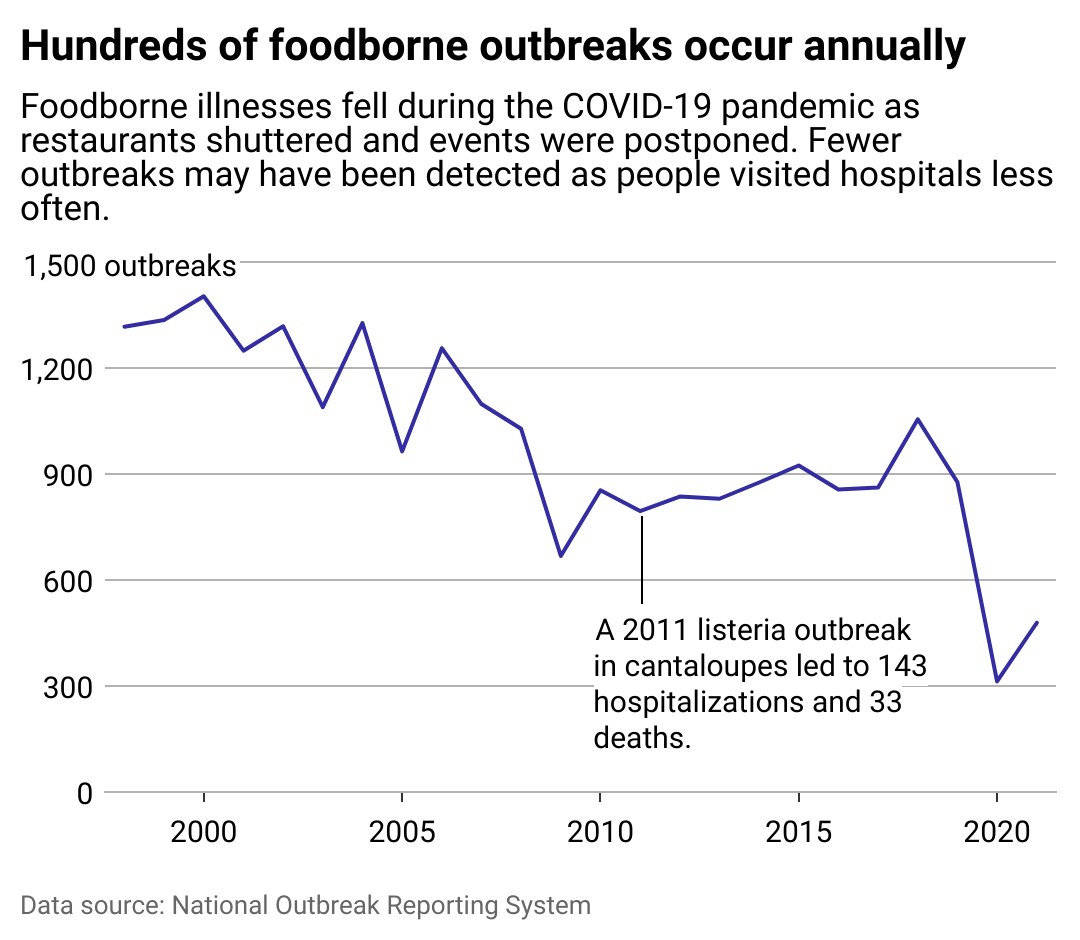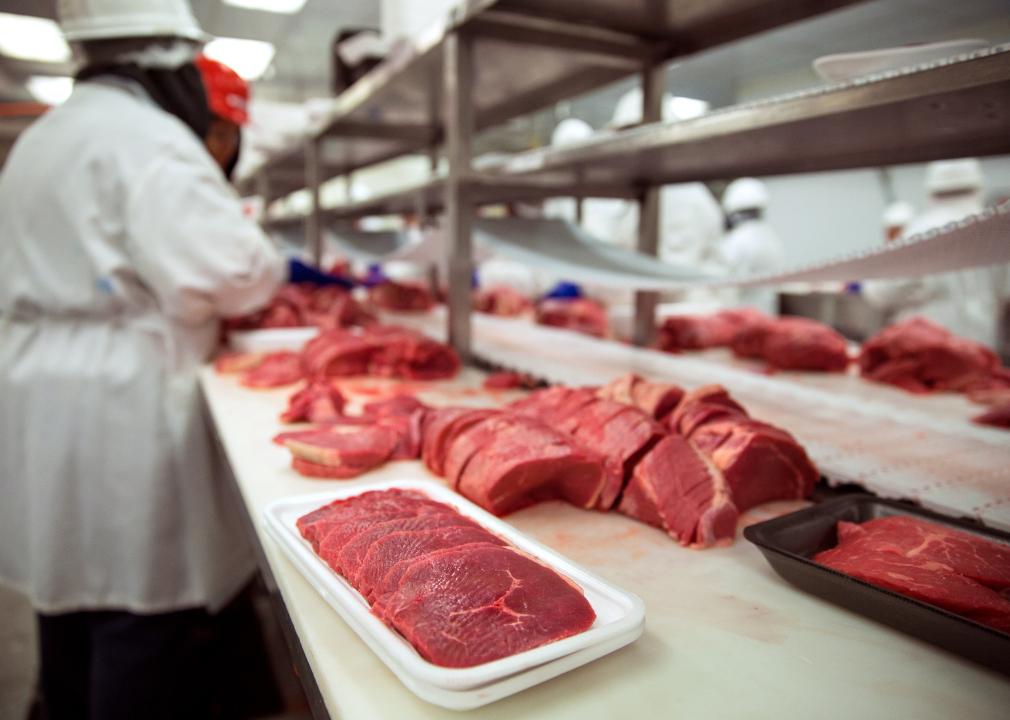History of foodborne outbreaks in the US
El Nariz // Shutterstock
History of foodborne outbreaks in the US
Meats of all types sit raw before packaging.
The year did not start well for dozens of people in 22 states who contracted salmonella from charcuterie meats in January 2024. Foodborne illness outbreaks like this make national headlines with food recalls, hospitalizations, and even deaths.
About 1 in 6 Americans will become sick from a foodborne illness this year, according to the Centers for Disease Control and Prevention. Of these 48 million projected cases, most will cause mild symptoms, but 128,000 people will need hospitalization, and 3,000 will die.
FoodReady used data from the CDC’s National Outbreak Reporting System to examine foodborne illness outbreaks over the past two decades. To be classified as an outbreak, two or more people must get sick from the same food-related origin.
Norovirus, salmonella, and E. coli are the most prevalent causes of foodborne illness. Norovirus-induced food poisoning is the most common, found in 62% of reported foodborne illnesses between 1998 and 2021, per the CDC. Norovirus is extremely contagious and spreads when food touches surfaces with feces or vomit particles or when food is grown in contaminated water.
When the food is infected, it’s likely due to salmonella, which causes about 1 million cases annually. Between 1998 and 2021, nearly 34% of cases required hospitalization.
Salmonella can be found in food, including flour and peanut butter, but it’s more common in raw and undercooked meat and poultry—particularly chicken. The Food and Drug Administration estimates that as of 2018, 1 in 25 packages of chicken have salmonella contamination.
Some strains of E. coli live in your intestinal tract and aid digestion, but others can make you sick. Contaminated raw vegetables, undercooked meat, and unpasteurized beverages can harbor these strains. While E. coli is not as prevalent as norovirus or salmonella—just 2% of cases between 1998 and 2021—it has nearly three times the death rate of norovirus.
Simple food safety can help prevent a nasty case of food poisoning. The Department of Health and Human Services recommends washing hands, utensils, and kitchen countertops thoroughly; keeping raw meat and eggs separate from other foods; cooking food enough to kill germs; and proper refrigeration and freezing.
![]()

FoodReady
Foodborne outbreaks have fallen but remain prominent
Line chart showing that hundreds of foodborne outbreaks occur every year.
Nearly 21,000 people have been hospitalized from over 23,000 foodborne outbreaks between 1998 and 2021, according to the CDC. More than half of those outbreaks occurred in restaurants, including at least five at Chipotle Mexican Grill, which affected over 1,100 people between 2015 and 2018. In 2020, the restaurant chain agreed to pay the federal government a $25 million fine for repeatedly failing food safety standards.
Along with tainted meat, contaminated produce can cause foodborne illnesses. In 2015, a salmonella outbreak from imported cucumbers affected people in 40 states, causing 204 hospitalizations and six deaths. In 2018, a 36-state E. coli outbreak in romaine lettuce sent 96 people to the hospital and caused five deaths.
Although food safety officials can issue product recalls, tracking the source of an outbreak can take time and involves patient interviews, finding the origin of illness exposure, and examining all points of the supply chain. A 2013-2014 salmonella-contaminated chicken outbreak took 16 months to pinpoint, leading to at least 240 hospitalizations across 29 states.
In 2020, the number of foodborne outbreaks dropped 26% from 2017-2019’s average. According to the CDC, the decline may be linked to the COVID-19 pandemic, as thorough hand-washing, lockdowns, and less international travel and eating out may have contributed. The rise in telehealth may have also led to less foodborne illness testing.
As the world reopened, outbreaks increased, making the likelihood of contracting a foodborne illness more common. However, it’s important to remember that maintaining simple food safety measures can go a long way to preventing foodborne illness.
Story editing by Shanna Kelly. Copy editing by Paris Close. Photo selection by Clarese Moller.
This story originally appeared on FoodReady and was produced and
distributed in partnership with Stacker Studio.

